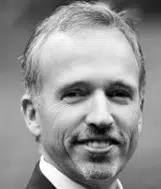
Often, we explore these styles alongside our authors with the goal of helping them choose the ideal “formula” for their non-fiction book.
Whether you are getting started in storyboarding your next hit or brainstorming ideas for your first published work, let this article serve as a guide for you to determine the type of style that will suit your book best.
Elliot Neff – A Case Study in Time
Elliot Neff is a busy man. He is the father of seven children, CEO of a growing company called Chess4Life, and spends most of his productive hours traveling the world to speak at chess tournaments.
It is difficult to imagine how a man such as Elliot could possibly squeeze out the time to write a book! Even when Elliot does find time to write, he is unclear on what to do. Thus, his rare block of free time for writing and sharing his ideas is under-utilized.
But, after Elliot selected a specific writing style for his non-fiction work, the daunting question of how to write his book vanished instantly!
Now possessing a clear-cut writing plan, Elliot’s time for writing is both productive and structured. He is making smooth progress on his manuscript!
Does Elliot’s story sound familiar? Authors often struggle to make maximal use of their writing time, due to not knowing how to lay their ideas out. By learning about the 12 different non-fiction styles, you can take the guesswork out of writing your next book.
Now, choosing from one of these styles by no means makes your book templated.
Rather, having a defined style simply tees you up with the appropriate framework and allows you to make it unique with the one thing that your audience craves: your experience.
The 12 Non-Fiction Writing Styles
These are the 12 non-fiction styles for authors to use as a framework in writing their books.
Problem / Solution
This is the most common style of non-fiction books. Here, the author presents a problem, usually summed up by a “story question,” (like our story of Elliot) and then offers the solution.
To be persuasive, the author may present multiple possible solutions and demonstrate why they will or will not work to address the posed problem.
A Versus B
The classic “this or that” non-fiction work.
In this style of book, one thing gets compared to another. This could be a comparison between service-based businesses and product-based businesses, or even two styles of leadership in an organization.
Non-fiction works like these are ideal for helping the reader evaluate the choices at their disposal.
How-To
How-To books are simple and straightforward. They take a non-fiction idea and typify it into an instructive style of writing.
Books such as these are meant solely to impart wisdom from writer to reader.
Parable
Telling a fictional story in the form of a parable is an effective manner in which to convey a message.
Art or Photography Book
This book is often referred to as a coffee table book.
Books such as these allow imagery to be the focal point for the reader and have their text merely serve to enhance the imagery. This prompts the author to make their own profound conclusions.
An art or photography book can be incredibly compelling when executed correctly.
Article Compendium
Article compendium books offer the reader a collection of curated articles within a given topic. These articles are meant to be easily digested and call the author to a conclusion.
They can also vary tremendously in length. For example, an article compendium titled “10 Things You Didn’t Know About Starting Your Own Business” might be as brief as 5,000 words, or even as long as 10 full-length chapters.
Data Heavy
If you possess a breadth of statistics to share, a non-fiction book might be the best way to get your message across.
Books such as these take data-rich material and make it more user-friendly, with lots of charts and graphs. When a book like this is user-friendly, it aids the audience in understanding the information quickly and retaining what they read.
Outlining the relevant facts and statistics in an engaging and organized manner helps your audience see the perspective you want them to see.
Books about People
Writing a book about yourself or another person can focus on transformational events in the author, narrator or central character’s life. This form of writing is typically close to the author’s experience. Using your experiences to express advice on improving the human condition makes a powerful book.
Letters & Journals
Personal thoughts, reflections, articles and blog posts can be incorporated together to form the foundation of a book.
Biography
The life story of someone written by another author.
Autobiography
The writer’s own account of his/her life experience.
Memoir
The writer’s record of experiences from his/her own life.
Creating Your Own Style
The final style of non-fiction writing is the one that you choose for yourself. While many of these writing styles are tried and true, there is always the potential for the author to create something distinct and new.
Knowing Exactly Where to Start
By now, you should be much more familiar with the possibilities at your disposal for non-fiction writing. Choosing a style that is right for you is a highly personal decision. Let us know if we can help in making that decision for your future best-seller.

